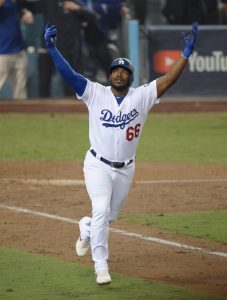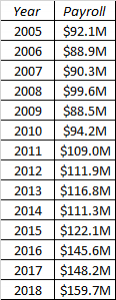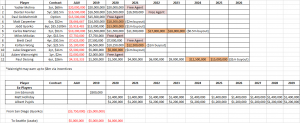Rounding up the original content from the MLB Trade Rumors writing staff over the last two weeks…
- This offseason’s free agent market has been humming along at a respectable pace, at least in comparison to last winter’s historic lack of activity. Jeff Todd took a look at the signing action thus far, in regards to which members of MLBTR’s Top 50 Free Agents list had found deals. At the time of Jeff’s post on December 18, sixteen of the 50 had signed, and six more names (Andrew Miller, Anibal Sanchez, Matt Harvey, Daniel Murphy, Trevor Cahill, Joakim Soria) have also since landed new contracts.
- Along those same lines, Mark Polishuk polled the MLBTR readership to ask which of the seven remaining unsigned members of our Top 10 free agents would be the next to ink a deal. Yasmani Grandal was the top choice with just over 25% of the vote, though it was fourth-place finisher Michael Brantley (who netted 14.89% of the vote) who ended up signing soonest, agreeing to a two-year deal with the Astros barely 24 hours after the poll was posted.
- Connor Byrne also put a question to the readers, asking which of Yasiel Puig or Nick Castellanos was the preferred acquisition in a Trade Candidate Faceoff. 58.55% of the vote went towards Castellanos, though apparently the Reds didn’t agree with the majority, as Cincinnati acquired Puig as part of a seven-player trade with the Dodgers last week.
- Speaking of trades, Jose Martinez no longer appears to have a starting role with the Cardinals, and thus stands out as a candidate for a deal. Mark explored the first base/DH market to try and find a trade partner for Martinez, though the search is complicated by Martinez’s lack of defensive prowess and the number of teams who have already addressed needs at first base.
- Rob Huff continued his Projecting Payroll series with a look at what the Cardinals might have available to spend this winter. Based on roster needs and past spending habits, Rob estimated that the Cards could have around $26.3MM in available funds. A good chunk of that money has already been used up, of course, as St. Louis made a big splash in the bullpen market to sign Miller to a two-year deal worth $25MM guaranteed, plus a vesting option for 2021.
- With the caveat that not all contract terms are made public, approximately 12 teams currently have a manager or a front office boss (a GM or a president of baseball operations) going into the last year of their contracts, as Mark details in this listing of team personnel that may or may not be on the hot seat in 2019.





